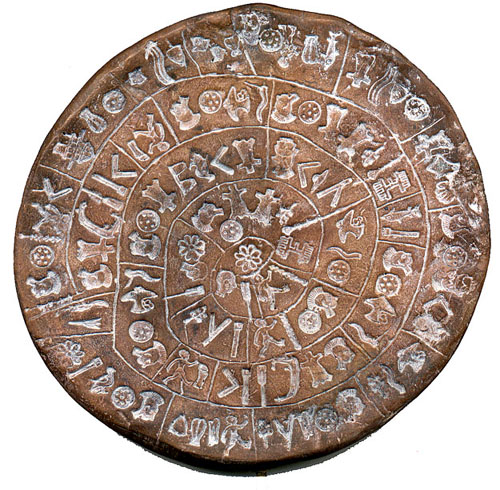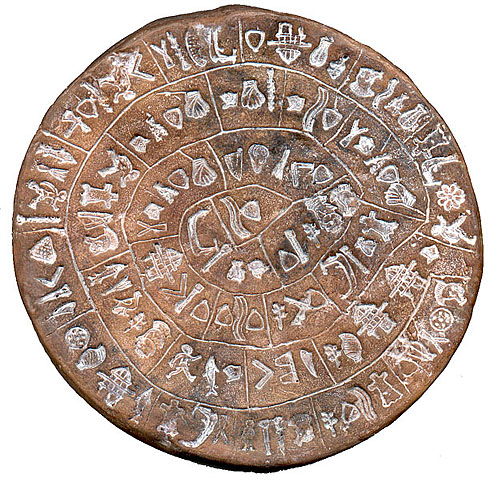The Phaestos Disk
The Phaestos disk is an enigmatic disk about 17 cm diameter, found in the Minoan
palace/temple of Phaestos in Crete. It appears to be writing--or rather, printing.
The characters were punched into the clay from shaped punches like moveable
type. It is regarded as authentically ancient, not a hoax, but no writing like
this has been found anywhere else, and it is not known where the disk might
have come from, what its purpose might have been, or what language it might
be written in. It probably is around 4000 years old. These images are computer
scans of both sides of a museum replica we bought in Athens.
 |
|
One side of the Phaestos disk
|
 |
|
The other side of the Phaestos disk.
|
Here are some personal observations about the disk.
- The symbols may be phonetic letters, but are more probably syllables, because
there are so many different ones.
- The writing probably was done from the outside in, for two reasons: (1)
In Egyptian hieroglyphics, and perhaps here, figures face toward the start
of a word, and (2) the was the second ring from the outside starts looks more
natural if it was placed after the outer ring.
- The two sides probably represent one continuous message, the side shown
in the upper picture coming first. I suggest this because of the relative
density of "words" starting
 in the top image (12 out of 29), whereas the only "word" starting
this way in the lower image is the first (assuming that it is correct that
the disk was printed from the outside inward). Whether the boxes delimit words
or phrases is anyone's guess, and if it was an agglutinative language there
may not have been much difference between the concepts
in the top image (12 out of 29), whereas the only "word" starting
this way in the lower image is the first (assuming that it is correct that
the disk was printed from the outside inward). Whether the boxes delimit words
or phrases is anyone's guess, and if it was an agglutinative language there
may not have been much difference between the concepts
- The "helmet" character, mentioned as a word starter along with
the "7-dotted disk" above, occurs only at the start of a "word."
It could be a punctuation mark of some kind, denoting some kind of a boundary
such as a phrase boundary.



